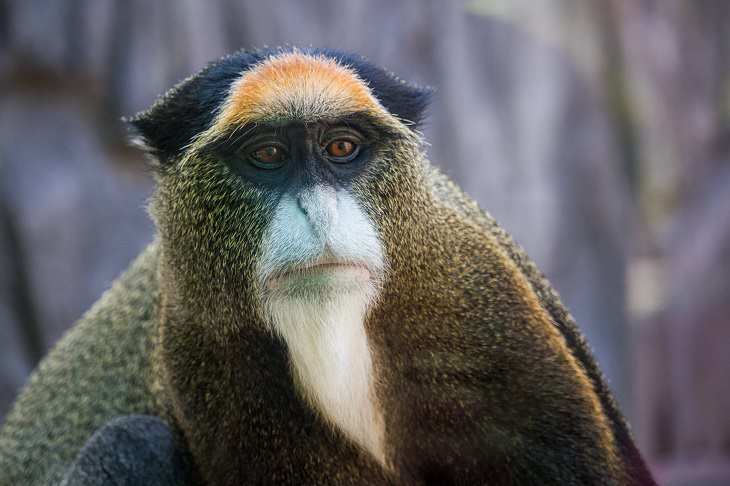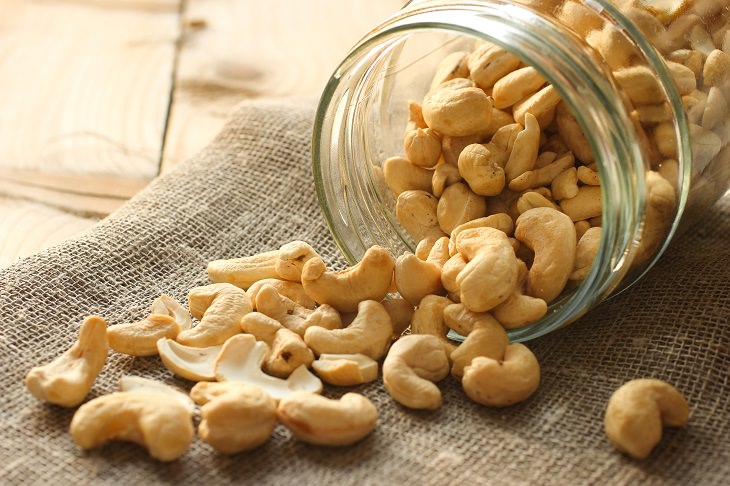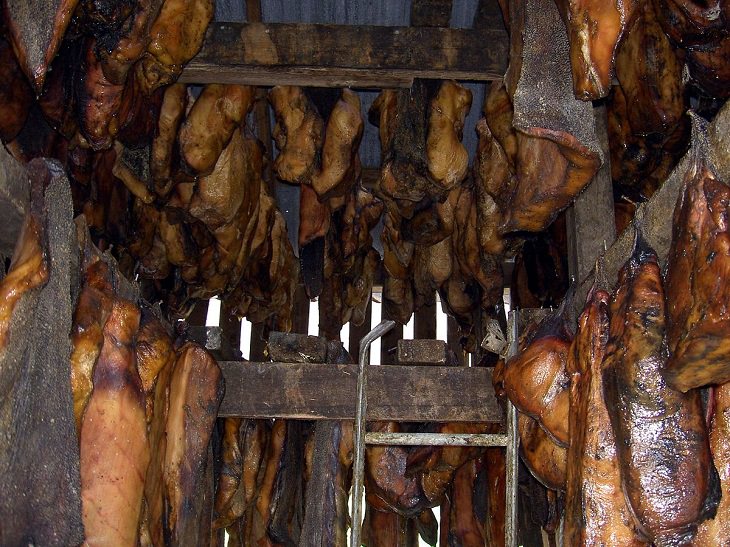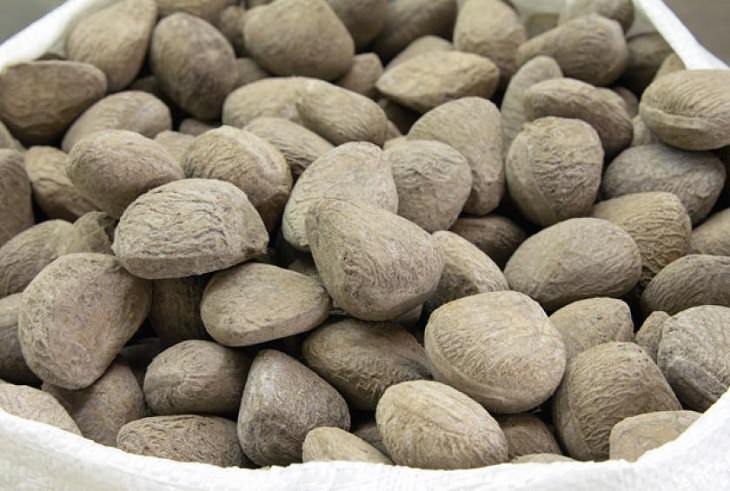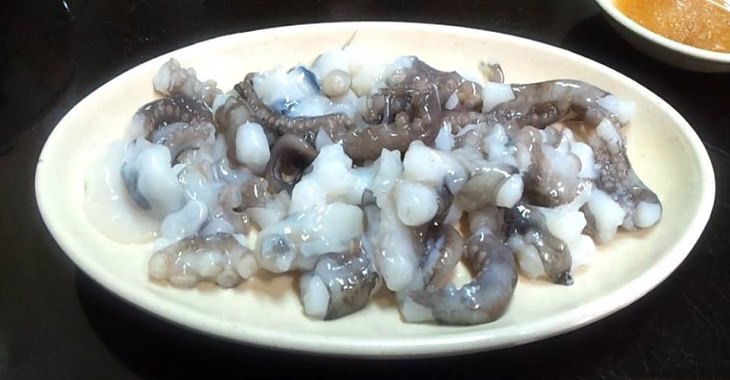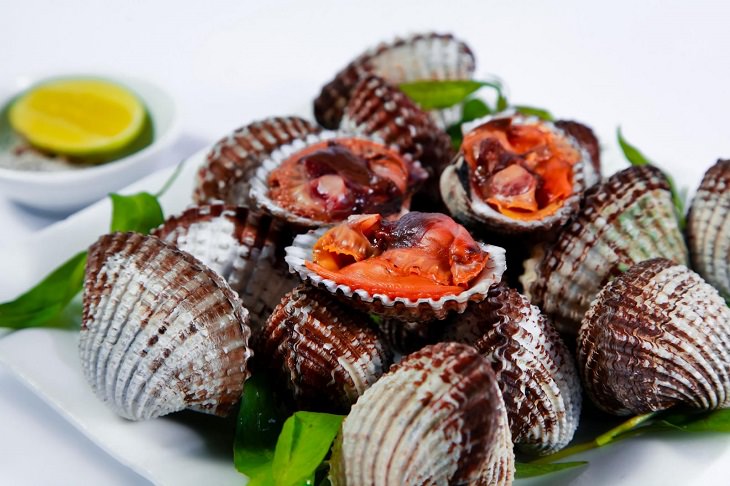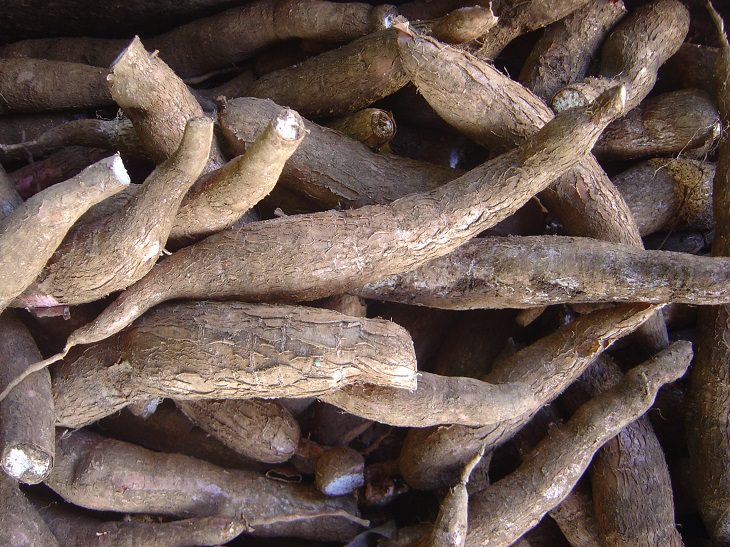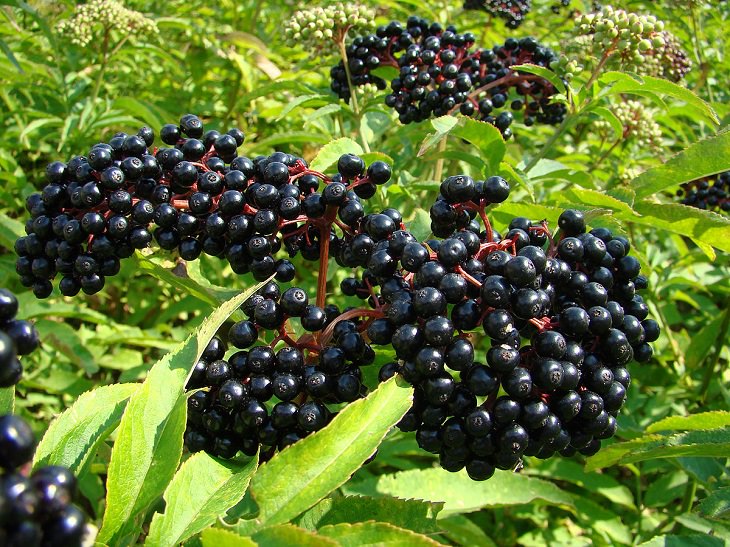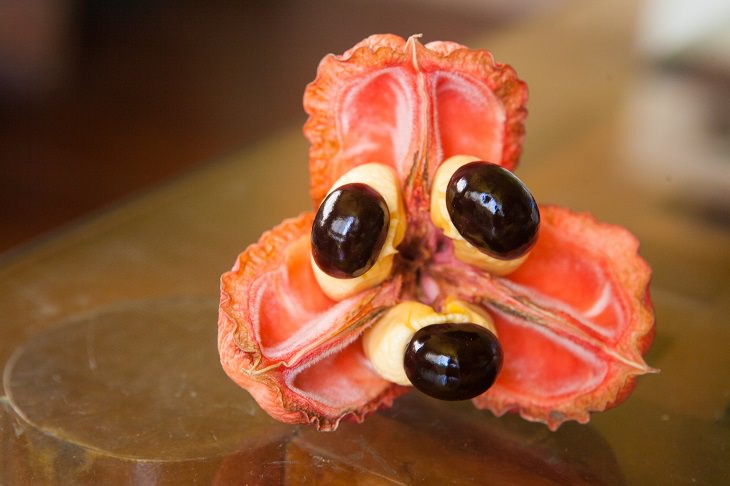1. Fugu (Pufferfish)
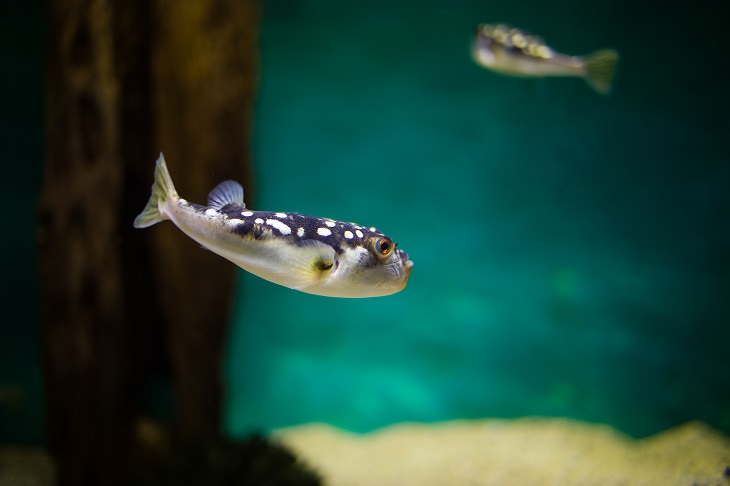
This cute fish, a Japanese delicacy, contains a deadly poison (tetrodotoxin) in its skin, gonads, and liver. Chefs have to be specially qualified to prepare this dish and their training usually takes three or more years. Restaurant preparation and serving of fugu is strictly controlled by Japanese law. For example, serving fugu liver was banned back in 1984, since this is the most poisonous part of the fish. At this point in time, there is no antidote for fugu poisoning.
2. Monkey Brains
This meal is a perceived delicacy in some African and Asian tribes. However, there’s no concrete knowledge of this, so hopefully, this tradition is being condemned. For example, in China, serving monkey brains is punishable by up to 10 years in prison. The danger of eating this meat is that you can contract something called Creutzfeldt-Jakob disease – a disease that severely damages the human brain and may be fatal.
3. Cashews
We all love to snack on this tasty nut from Brazil, but eating them raw is a completely different story. Not many people know this, but the raw cashews that you see on supermarket shelves have actually been steamed to remove urushiol, a chemical that is also found in poison ivy. Consuming high levels of this chemical can be fatal.
4. Hakarl
Hakarl, an Icelandic specialty, is a dish made from a Greenland shark that possesses neither a kidney nor a urinary tract, meaning all the body’s toxins are absorbed directly into the shark’s skin. This meat is cured with a special fermentation process and hung up to dry for 5-6 months.
5. Pangium Edule
This sweet and aromatic fruit that is native to East Asia requires a complicated preparation. That is, of course, if you don’t want to die from hydrogen cyanide poisoning. The seeds have to be boiled without their shells, then they are buried in banana leaves, ash, and earth for 40 days. Despite being dangerous, this fruit is an excellent source of iron and vitamin C.
6. Sannakji (“Live” Octopus)
This dish is popular in South Korea and Japan and is not meant for the faint of heart. The danger is that the octopus’ suction cups still have their gripping power, even if the animal is already technically dead. This actually results in about 6 deaths every year due to suffocation. Therefore, in order to prevent this, chew carefully or ask to have it sliced into smaller pieces.
7. Blood Clams
This Southeast Asian clam gets its name from the red hemoglobin liquid inside its soft tissues. Consuming this shellfish is pretty dangerous as they live in low-oxygen environments and therefore, need to feed on bacteria and viruses, including hepatitis A, typhoid, and dysentery to get by.
The traditional method of cooking blood clams involves a quick boiling, so most of the pathogenic organisms survive and infect many consumers. This is a shame as they’re supposed to be deliciously crispy and delicate in flavor.
8. Cassava (Manioc)
This root vegetable is a popular meal in developing countries, as it provides useful nutrients and a source of starch. However, if eaten raw, cassava can produce cyanide – a deadly substance for the human body. Therefore, to be on the safe side, it should be boiled, mashed, grilled, fried, baked or steamed before consumption.
9. Elderberries
These berries might look pretty yummy, but they definitely have a dangerous side. Their leaves, seeds, and twigs contain cyanide, so you must remove them and only eat elderberries that are fully ripe and properly cooked. Failure to do so could result in severe diarrhea, seizures, and even death.
10. Ackee
This weird looking fruit can cause Jamaican vomiting sickness, which can be lethal. In order to enjoy this exotic food, native to West Africa, you must remove the black seeds and eat ackee only when fully ripe. This way you’ll avoid consuming the toxins that cause the sickness.


